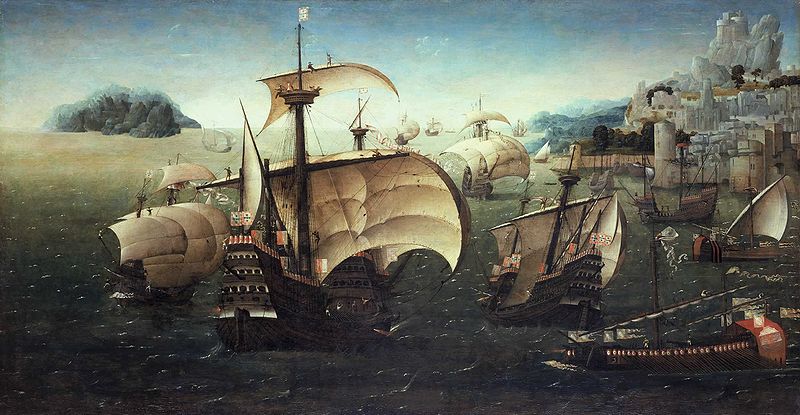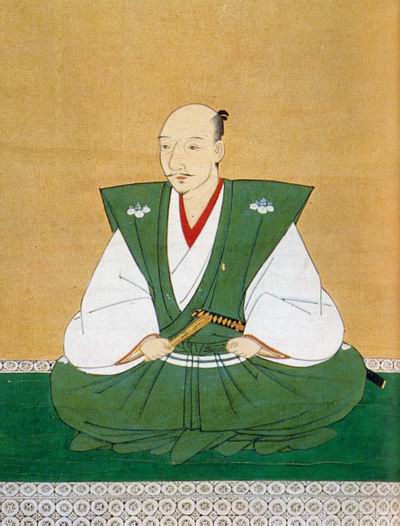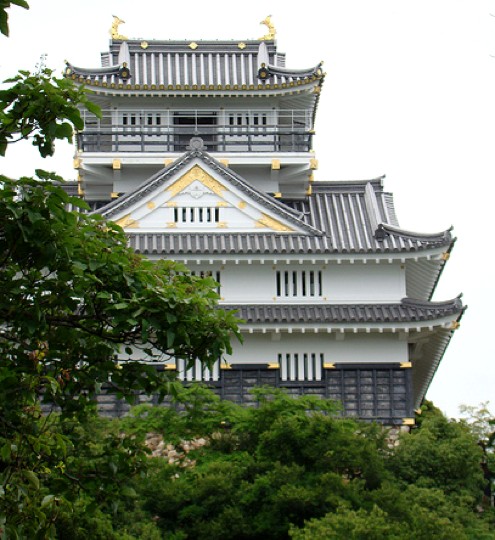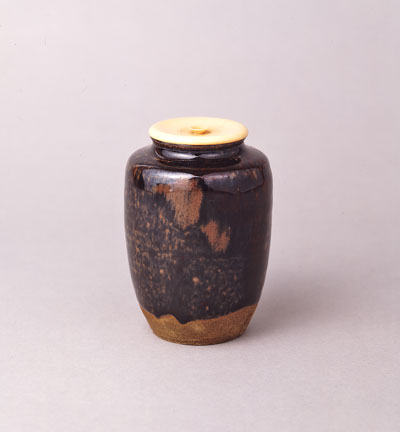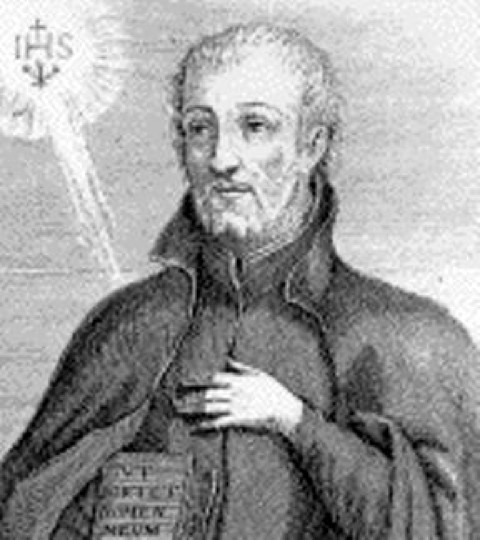Tea and Jesuits II
In 1561, Juan Fernández, a lay member of the Society of Jesus, recorded the adoption of tea at the Jesuit residence where Damien, a young Japanese convert, “has the task of always having a kettle of hot water ready, which he gives to all the visitors and to those in the residence who want it. This the custom of the country.”[1] Although not entirely clear, the Fernández commentary may be the first suggestion of Europeans regularly taking tea. More certain were the accounts of the Jesuit Luis d’Almeida who noted that “the Japanese are very fond of an herb agreeable to the taste, which they call chia”[2] and described tea as a “delicious drink once one becomes used to it”[3] as if making an enthusiastic recommendation of the herb.
Luis d’Almeida was a Portuguese physician who arrived in Japan in 1556 aboard a merchantman.
He entered the Society in Japan as a lay brother to work at the Kyushu mission until 1565 when he and the Jesuit Luís Fróis were sent to Kyoto, the imperial capital and the ancient center of Japanese art and culture. There they experienced tea in the aura of the palace court and the foremost tea masters of the sixteenth century, a time of profound changes in the art of chanoyu. Invited to tea gatherings by warlords and wealthy merchants, the Jesuits were stunned by the splendid tea rooms and costly utensils treasured by the Japanese just “as rings, gems and necklaces of precious rubies and diamonds”[4] were coveted by Europeans.
Luís Fróis recorded his visit to Gifu Castle, the palatial fortress of Oda Nobunaga, the most powerful warlord of the time, and found it difficult to describe the opulence of its countless halls and chambers, including the beautifully appointed suites for tea:
“On the second floor are to be found the zashiki of cha [tea rooms]; these are rich and luxurious apartments where they take a powder called cha. These rooms are very quiet and not a sound is to be heard in them; their exquisiteness, perfection and arrangement are quite beyond my powers of description for I simply do not possess the necessary vocabulary as I have never seen their like before…”[5]
The tea served to guests within such rooms was necessarily expensive. Luis d’Almeida wrote that the “best quality cha costs about nine or ten ducats a pound and is drunk at gatherings at which the host, according to his means, shows off his treasures.”[6] Noting the Japanese penchant for rare and famous artworks, Almeida recorded that great sums were exchanged for tea utensils.
On one occasion in the nearby town of Sakai, Almeida was honored by Sancho, a rich Christian who feted him with a formal tea that lasted hours during which he was escorted to a tea house where the guests, all observing proper Japanese manners, were served a light meal with rice wine and invited to drink tea prepared personally by the host. As a further sign of esteem, Almeida was shown a small, iron tripod used to hold the lid of the iron water kettle during the service of tea. As the Jesuit examined the implement, he noticed that it was old and worn and had been broken and repaired. His host told him that it was “one of the most valuable tripods in Japan and had cost him 1,030 ducats…” at which Almeida recalled that “the value of his treasures is not all that remarkable, because there is a man in
Miyako [Kyoto] who has an earthenware jar cha caddy…which is worth 30,000 ducats.”[7] Regarding the connoisseurship of tea utensils, the Jesuit Alessandro Valignano observed that “among these vessels is a certain kind which is prized beyond all belief and only the Japanese can recognize it,” describing the artworks as ”made by certain ancient masters” and so famous that “the Japanese can immediately pick out these valuable items from among thousands of others…”[8]
Alessandro Valignano was the powerful Visitor of Missions in the Indies and answered only to the Jesuit Superior General in Rome. Young, charismatic, and gifted, he was extraordinarily sensitive to the cultural nuances of Japan and understood that chanoyu among the Japanese elite was not only a beverage and an aesthetic pursuit but also an important social and political activity. In a minutely detailed treatise on the Society’s mission in Japan entitled in Il Cerimoniale per i Missionari del Giappone (The Customs [to be observed] for the Mission of Japan, 1581), Valignano instructed the Jesuits to observe every aspect of chanoyu as a gesture of welcome and amity. Visiting Japanese nobility, dignitaries, and the wealthy were ushered into the Jesuit residence to be entertained in formal Japanese suites, including a well appointed tea room stocked with different grades of fine tea and a large collection of tea utensils of quality, all managed by an attendant trained in chanoyu.[9]
Continued in Tea and Jesuits III
Figures
1.
Circle of Joachim Patinir (Flemish, ca. 1480-1524)
Portuguese Carracks off a Rocky Coast, circa 1540
Oil on panel
National Maritime Museum
Greenwich, England
2.
Officers, Merchants, and Clerics
Kanō Naizen 狩野内膳 (1570 – 1616), attributed to
Portuguese Carrack at Japanese Port
Japan: Momoyama period
Folding screen: ink, color, and gold on paper
National Museum of Ancient Art
Lisbon, Portugal
3.
Kano Motohide 狩野元秀 16th century
Portrait of Oda Nobunaga 織田信長, detail
Hanging scroll; color on paper.
Choko-ji 長興寺
Aichi, Japan
4.
Gifu Castle 岐阜城
Reconstruction of concrete, 1956
Gifu, Japan
5.
Cha-ire 茶入 (Tea caddy)
Omotesenke Collection
Kyoto, Japan
6.
Portrait of Alexander Valignano, ca. 1600
Engraving: ink on paper
Notes
[1] Michael Cooper, “The Early Europeans and Tea,” Tea in Japan: Essays on the History of Chanoyu, Paul Varley and Kumakura Isao, eds. (Honolulu: University of Hawai’i Press, 1989), p. 104.
[2] Letter of 1565 from Luis d’Almeida, S.J. (Portuguese, 1518-1584) published in Giovanni Pietro Maffei, S.J. (Italian, 1533–1603), Le istorie dell’ Indie Orientali (Paris, 1572, Florence, 1588, and Cologn, 1589), Francesco Serdonati, trans. (Bergamo, 1749), bk. VI, p. 171 and William H. Urkers, All About Tea (The Tea and coffee trade journal company, 1935), vol. l, p. 25.
[3] Michael Cooper, “The Early Europeans and Tea,” Tea in Japan: Essays on the History of Chanoyu, Paul Varley and Kumakura Isao, eds. (Honolulu: University of Hawai’i Press, 1989), p. 262.
[4] Ibid.
[5] Michael Cooper, ed., “Castles and Soldiers,” They Came to Japan: An Anthology of European Reports on Japan, 1543-1640 (Berkeley: University of California Press, 1965), p. 133.
[6] Ibid., p. 263.
[7] The gold ducat, imperially sanctioned in 1566 by the Holy Roman court, was the standard European trade currency during the sixteenth century. For Luis d’Almeida’s description of tea, see Michael Cooper, ed., “Art and Culture,” They Came to Japan, pp. 262-264 and cf. Michael Cooper, “The Early Europeans and Tea,” Tea in Japan, pp. 112-114.
[8] Michael Cooper, ed., “Art and Culture,” They Came to Japan, p. 261.
[9] Michael Cooper, “The Early Europeans and Tea,” Tea in Japan, pp. 105-109.

